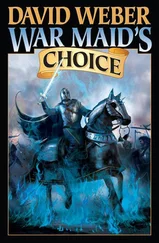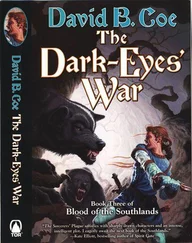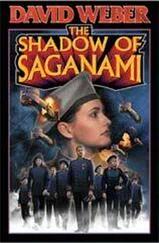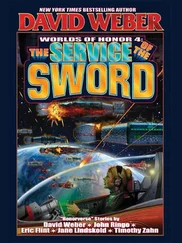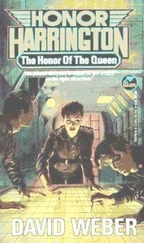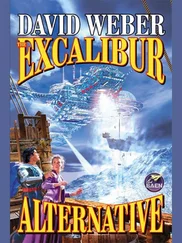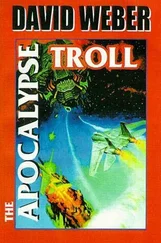David Weber - The Short Victorious War
Здесь есть возможность читать онлайн «David Weber - The Short Victorious War» весь текст электронной книги совершенно бесплатно (целиком полную версию без сокращений). В некоторых случаях можно слушать аудио, скачать через торрент в формате fb2 и присутствует краткое содержание. Год выпуска: 1998, ISBN: 1998, Издательство: Baen Books, Жанр: Космическая фантастика, на английском языке. Описание произведения, (предисловие) а так же отзывы посетителей доступны на портале библиотеки ЛибКат.
- Название:The Short Victorious War
- Автор:
- Издательство:Baen Books
- Жанр:
- Год:1998
- ISBN:0671875965
- Рейтинг книги:3 / 5. Голосов: 1
-
Избранное:Добавить в избранное
- Отзывы:
-
Ваша оценка:
- 60
- 1
- 2
- 3
- 4
- 5
The Short Victorious War: краткое содержание, описание и аннотация
Предлагаем к чтению аннотацию, описание, краткое содержание или предисловие (зависит от того, что написал сам автор книги «The Short Victorious War»). Если вы не нашли необходимую информацию о книге — напишите в комментариях, мы постараемся отыскать её.
The Short Victorious War — читать онлайн бесплатно полную книгу (весь текст) целиком
Ниже представлен текст книги, разбитый по страницам. Система сохранения места последней прочитанной страницы, позволяет с удобством читать онлайн бесплатно книгу «The Short Victorious War», без необходимости каждый раз заново искать на чём Вы остановились. Поставьте закладку, и сможете в любой момент перейти на страницу, на которой закончили чтение.
Интервал:
Закладка:
Honors nostrils flared, and Nimitz hissed. A savage sense of satisfaction went through her, cold and deadly, not exultant. Parks sat silent, watching her, and she inhaled and squared her shoulders.
"Thank you, Sir. For all of our people."
The admiral shrugged, but her link to Nimitz was still open, and she felt Parks' mixed emotions. His own actions, however successful, left him open to serious criticism. Young's family could be expected to play on them in any defense they mounted, and his endorsement of the board's recommendations would make the Earl of North Hollow his mortal enemy, whatever the trials outcome. He knew it, and it worried him, but he'd endorsed them anyway.
"At any rate," he went on after a moment, "it's time you took Nike home for repairs, Dame Honor."
Honor nodded. The repair base had patched up the most critical of the task group's hurts, but most of its units had already departed for Manticore. There were too many damaged ships for the base's capacity; the worst cripples, the ones needing the most yard time for complete repairs, had to be sent home, and HMS Nike would take months to heal.
"You depart for Manticore within the next twelve hours," Parks said, "and I'm sending Lord Young home in your ship under quarters arrest."
Honor stiffened and started to open her mouth, but Parks' gaze pinned her to her chair.
"Yours is the next departing ship. Considering the serious charges against him, he is entitled to the promptest return—and trial—possible, and I will expect you to treat him with proper military courtesy. Until and unless he is tried and convicted, he remains a Queens officer and your senior. I realize the uncomfortable position in which this places you, but I expect you to do your duty—as you always have."
His eyes softened, somehow, with the final words, and she was puzzled by the surge of genuine apology she sensed through her link to Nimitz. It muted her own angry distaste for sharing the same air as Pavel Young., and she bit her lip for just a moment, then nodded.
"I understand, Sir Yancey."
"I thought you would, Milady." Her eyebrows tried to rise at his totally unexpected form of address, and he smiled. It wasn't an effusive smile, but it was genuine, and he rose and extended his hand.
"Commodore Capra will transmit your formal orders to Nike, " he said. "I will personally inform Captain Young of the boards recommendations—and my own— before I send him aboard."
"Yes, Sir."
"Then I think that concludes our business, Dame Honor. God speed." He shook her hand firmly, and she braced to attention and turned toward the hatch. It hissed open before her, and she started to step through it, then paused as the admiral spoke again.
"Oh, by the way, Dame Honor. I almost forgot to mention that you'll find another passenger waiting for you when you return to Nike. "
"Another passenger, Sir?" Honor turned in the open hatch, her expression puzzled, and Parks chuckled with genuine humor.
"It seems Captain Tankersley was promoted from captain junior grade to captain of the list just before the Peep attack. As such, he's too senior to stay on as exec aboard the base here, and since he, um, did such a fine job of dealing with Nike's original engineering difficulties, I thought it only fitting to return him to Manticore for reassignment aboard her."
Honor stared at him, trapped between amazement and sudden joy, and Parks gave her the first completely natural smile she'd ever seen from him.
"I trust the two of you will find something to talk about during the voyage, Captain Harrington."
APPENDIX: HONOR HARRINGTON'S NAVY
NAVAL DESIGN AND DOCTRINE
Warship design in the twentieth century of the Diaspora was dictated, as it had been for the past seven hundred T-years, by the limitations and capabilities of starship propulsive systems.
Engagements in hyper-space were far less common than normal-space combat simply because it was so difficult for ships to find one another there. As a result, designs were optimized for normal-space warfare, despite the severe tactical drawbacks this imposed on the rare occasions upon which ships fought one another in hyper.
Normal-space movement depended upon a ship's impeller wedge, the inclined bands of stressed gravity above and below the vessel. The physics of the impeller drive required that this wedge be open both ahead and astern of the ship, although the sternward opening was much shallower. Since no known weapon could penetrate an impeller stress band, this meant no ship could fire at targets directly "above" or "below" it, but it also meant that fire directed at a ship from above or below was ineffective.
The sides of the impeller wedge, unlike its ends, could be closed by gravity sidewalls, a much weaker version of the impeller stress band. A warship's sidewalls were its first and primary line of defense, extremely difficult for missiles to penetrate (though there was an unending race between missiles with better sidewall penetrators and defensive designers' efforts to build ever tougher sidewalls) and invulnerable to even the most powerful energy weapons at ranges in excess of 400,000 to 500,000 kilometers (approximately forty percent of effective range against targets without sidewalls).
The fact that a ship could no more fire out through its impeller wedge than it could be fired upon also dictated the arrangement of its armament, most of which was grouped on the broadside, with a much weaker "chase" armament arranged for fire ahead and astern. Chase armaments were intended to cover the blind spots in a vessel's broadside firing arcs, but they tended to be much lighter than broadside batteries because there was simply less hull volume in which to mount them.
Although no "Holes" could exist in an impeller stress band, portals (known to naval spacers as "gunports") could be opened in a vessel's sidewalls to permit unobstructed fire of its own weapons. In theory, gunports represented dangerous chinks in its defenses; in practice, the targets were too small and fleeting—they were "open" only long enough for a shot to be fired through them—to be deliberately targeted. Nonetheless, it was not unheard of (though it was very rare) for a lucky shot to penetrate an open gunport.
Even a freak gunport hit, however, wasn't guaranteed to inflict damage. The maximum safe velocity in n-space was approximately .8 c for a ship with military-grade particle and radiation shielding, whereas merchantmen normally relied on much weaker—and less massive—shield generators, trading lower maximum speeds for greater cargo capacity. But speed wasn't the only reason military shielding was so much more powerful, for it was also used to fill the area between the sidewall and hull and could lessen or even negate the effect of a hit which managed to pierce the primary defense.
The constraints of the impeller drive and the fact that ships were designed for broadside fire also dictated their hull forms.
The nodes which generated the impeller wedge had to be very specifically located relative to the dimensions of a ship. In general, they had to lie within twelve to fifteen percent of the extreme ends of the vessel and well inside the maximum beam which the wedge allowed. Although there were a few idiosyncratic exceptions, this meant virtually all warships were flattened, "hammer-headed" spindles, tapering to their smallest dimensions at their fore and aft impeller rings and then flaring back out to perhaps a quarter of their maximum beam. The fact that starships generated their own internal gravity allowed designers to orient "up" and "down" perpendicular to the long axis of the ship, which both permitted efficient usage of internal volume and gave renewed meaning to the ancient terms "upper" and "lower" decks.
Читать дальшеИнтервал:
Закладка:
Похожие книги на «The Short Victorious War»
Представляем Вашему вниманию похожие книги на «The Short Victorious War» списком для выбора. Мы отобрали схожую по названию и смыслу литературу в надежде предоставить читателям больше вариантов отыскать новые, интересные, ещё непрочитанные произведения.
Обсуждение, отзывы о книге «The Short Victorious War» и просто собственные мнения читателей. Оставьте ваши комментарии, напишите, что Вы думаете о произведении, его смысле или главных героях. Укажите что конкретно понравилось, а что нет, и почему Вы так считаете.


